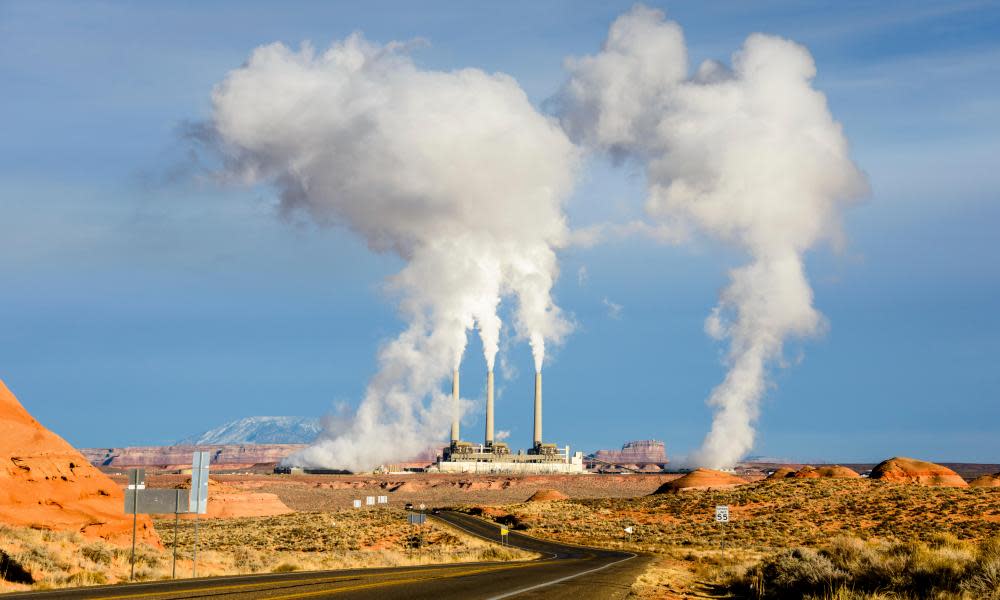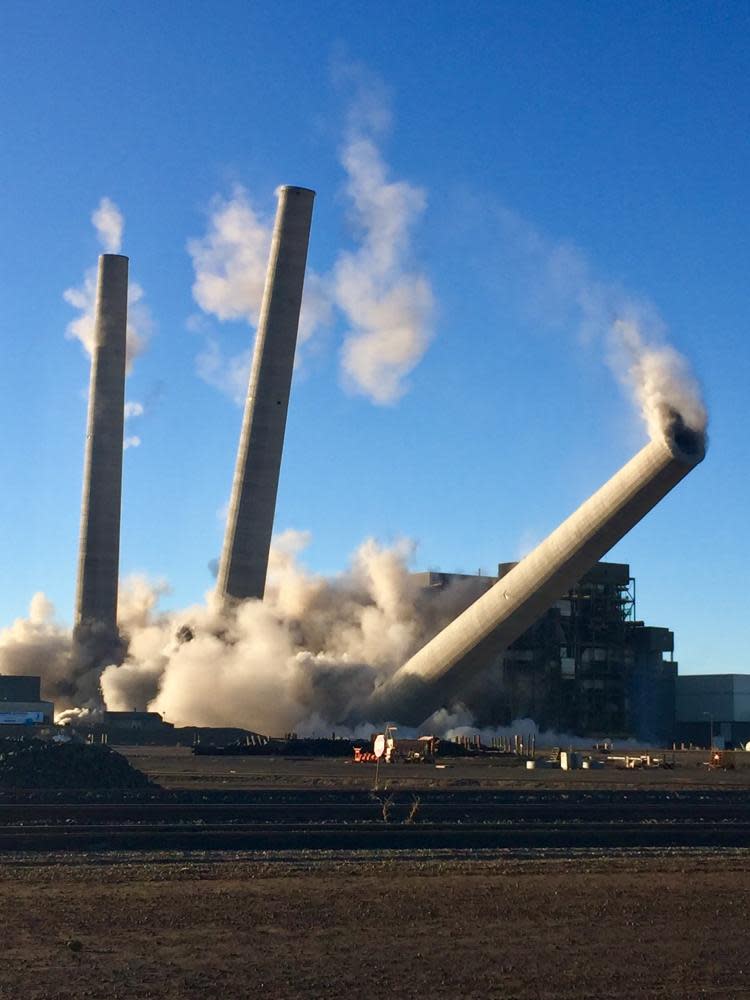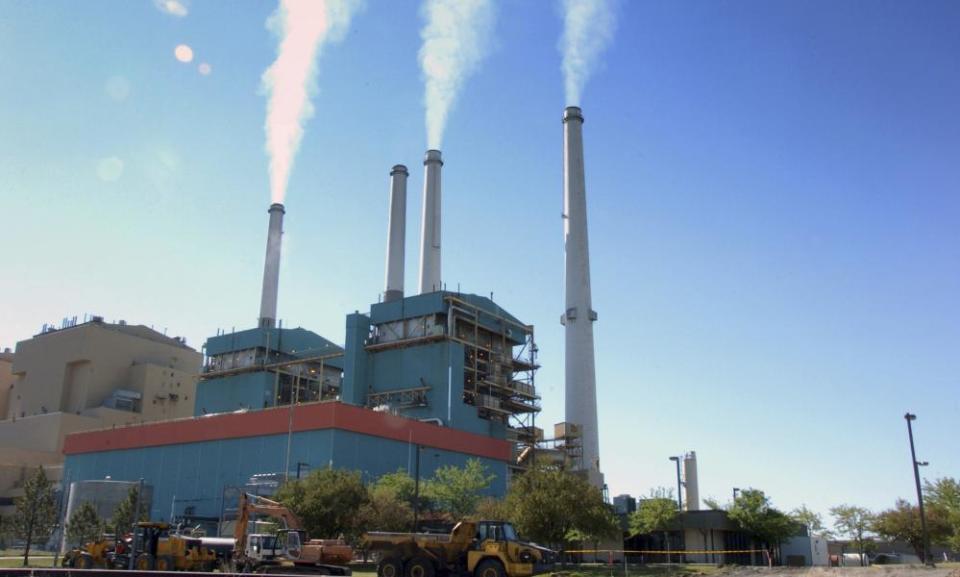What happens when America’s coal plants die?

When the coal-fired power plant just outside the tiny town of Nucla, Colorado, closed in 2019, it had the makings of a disaster.
The plant, which opened in 1959, shut down three years ahead of schedule when it ran out of coal, leaving the town shocked and facing the loss of its largest employer. The facility provided nearly half the tax revenue to the region, said Deana Sheriff, executive director of the West End Economic Development Corp, which serves Nucla and the surrounding area between Telluride and Grand Junction in western Colorado.
Left without vital funding for its fire department and school district, the town was terrified about its future.
We’re not going to die because one industry went away
Deana Sheriff
But despite the early plant closure, and an unemployment rate that more than doubled overnight, Nucla had done enough to prepare. The town has leaned on tourism, driven by outdoor activities, and the recent opening of dozens of small businesses to survive.
“Initially we saw a lot of frustration and concern, mostly about selling homes and folks moving away,” Sheriff said. But the town has adapted fairly well, she said: “We’ve diversified our economy enough that we’re not going to die because one industry went away.”
Increasingly outpaced by cheaper alternatives, including renewables, and under pressure from climate concerns, at least two dozen US coal power plants – many of them in small, rural communities – are expected to close or downsize in the next 10 years, as are most of the coalmines that supply them, according to the Environmental Protection Agency and experts. Most coal communities face the same challenges as Nucla: how to replace the jobs and tax dollars that have kept these towns afloat for decades?
In some cases, such as in Nucla, local officials started planning early. In others, the closures appear to have taken leaders by surprise.
The huge Navajo Generating Station in northern Arizona, within the Navajo Nation, also shut down in 2019. Local leaders complained that plant operators closed the facility decades ahead of schedule, although the region did have two years to prepare after the announcement. Little planning appears to have preceded the closure.
“What does ‘prepare’ mean?” said the Coconino county supervisor Lena Fowler. Regional leaders didn’t see many options for replacing the money and jobs as the closure loomed, she said.
The lack of preparation in Arizona – compounded by the subsequent pandemic that shut down tourism in the picturesque region near the Grand Canyon and a drought that has devastated the popular boating destination Lake Powell – has had dire consequences. Coconino county has lost $40m a year in property taxes since the plant, just outside the town of Page, closed, Fowler said. Families have been separated as one parent left for a job at another power plant, and there are concerns the Navajo Nation could cut essential services because of the tax losses.

A second Navajo power plant, Four Corners, is due to close in the next decade, as is the Cholla plant just outside the Nation. A nearby coalmine on the Hopi reservation, which supplied the Navajo Generating Station, has also closed. The Navajo Nation president, Jonathan Nez, did not respond to an interview request.
“The Nation didn’t do enough planning,” said Nicole Horseherder, a Navajo water rights activist who leads the Tó Nizhóní Ániup environmental non-profit. “They should have been planning for this the day the coal plant signed the leases. We can’t just be dependent on something we knew wasn’t going to last for ever.”
Cultural and regional differences have a huge bearing on how communities prepare and recover from a coal plant closure. Secluded towns that have relied on coal for decades – including power plant jobs that pay an average of $90,000 or more – can be reluctant to talk about a coal-free future. And don’t even bring up solar or wind power in some places.
“Renewables, for the workforce there, are the antichrist,” said Clint McRae, who owns the Rocker Six Cattle Company near the Colstrip coal power plant in Montana and is a member of the Northern Plains Resource Council, an advocacy group that fights for water quality protections. Some communities remain very loyal to coal and consider energy sources such as solar and wind as a threat to their way of life.
“It’s a very difficult subject to talk about over there. It’s going to take time to absorb in the community,” McRae said.
The Colstrip plant is scheduled to be retired in 2025, according to its operator’s latest estimates, and McRae and others worry about the pollution it will leave behind. Like other plants, Colstrip has been collecting coal ash – a toxic byproduct – in ponds. That pollution has seeped into the groundwater.

Coal ash can often be the most dangerous legacy of a closed plant. In 2014, 39,000 tons of ash and 27m gallons of contaminated water from a plant owned by Duke Energy that had closed two years earlier spilled into North Carolina’s Dan River.
Duke Energy has two other plants in North Carolina’s Person county that are expected to close within six years. Among those who have tried to get the community to transition its coal-based economy is state senator Mike Woodard, who admits it’s been a tough hill to climb in an area that has yet to accept the reality of coal’s future.
“Person county is going to have to accept that there’s a new way of doing business there,” said Woodard, a Democrat who helped negotiate the state’s recently enacted clean energy law. Renewable energy, not coal, is the future, he added. “We’re all going to be in the rowboat together and it would be great if we were rowing in the same direction.”
Some states have done better than others helping to row the boat. With a slew of coal closures coming to Colorado, the state has established an office to help communities plan for the transition.
Led by director Wade Buchanan, the Office of Just Transition has tried to steer local officials and residents away from the coal v renewables argument and to think about the transition in more economic terms. Buchanan compares the transition to that faced by timber communities in the Pacific north-west, which successfully transformed their economy when lumber mills began to close.
“I think we make a mistake thinking about this as uniquely coal-related or uniquely energy-related,” Buchanan said. “There is a cultural factor that makes it unique. But when you step back and think about how to transition away from this, there are other places that have relied on one industry or employer for a while.”
Buchanan pointed to Nucla as an example of how to manage that transition effectively, with more than 100 diverse small businesses opening in the area since the plant closed, thanks in part to tax breaks and other financial incentives. States and outsiders need to let rural communities figure out their own transitions, he said.
Related: When Wall Street came to coal country: how a big-money gamble scarred Appalachia
The Nucla area has leaned on its strengths to recover from the closure, Sheriff said. Residents are trying to open small bed and breakfasts rather than large hotels. Sheriff’s organization runs a grain mill for local businesses and is considering building a meat processing plant to make life easier for local ranchers. Other new businesses include catering companies, coffee shops, organic markets and ATV rentals.
Residents have made it clear they like Nucla’s quiet atmosphere, Sheriff said, and they don’t want to replace the coal plant with huge distribution centers or call centers or offices. “We’re not asking Google to come in and create a new tech location here,” she said. “It’s finding the right mixture of businesses that want that rural lifestyle. We’re isolated and we like it that way.”
The Nucla model isn’t always replicable in less picturesque areas. While western Colorado and the region near the Navajo Generating Station are obvious tourism destinations, it can be difficult for other communities to replace coal dollars with tourist dollars. Amanda Ormond, who formerly led the Arizona energy office and now is a director with the Western Grid Group, urged community leaders to think about their unique assets and then to research federal funding options to make the most of them and fill the gaps.
Then there’s the question of what to do with the sites of shuttered plants. Utilities across the country have discussed replacing coal plants with gas-powered plants, which has been criticized by activists who urge an end to fossil fuel use, while other plants have become college athletic facilities, restaurants and cannabis growing sites, according to Bloomberg.
Communities should look at non-energy possibilities for old power plants, relying on facilities already in place, Buchanan said. “There’s often railroad, water rights, transmission lines,” he said. “There’s a lot of energy infrastructure and that’s an asset to build on.”

